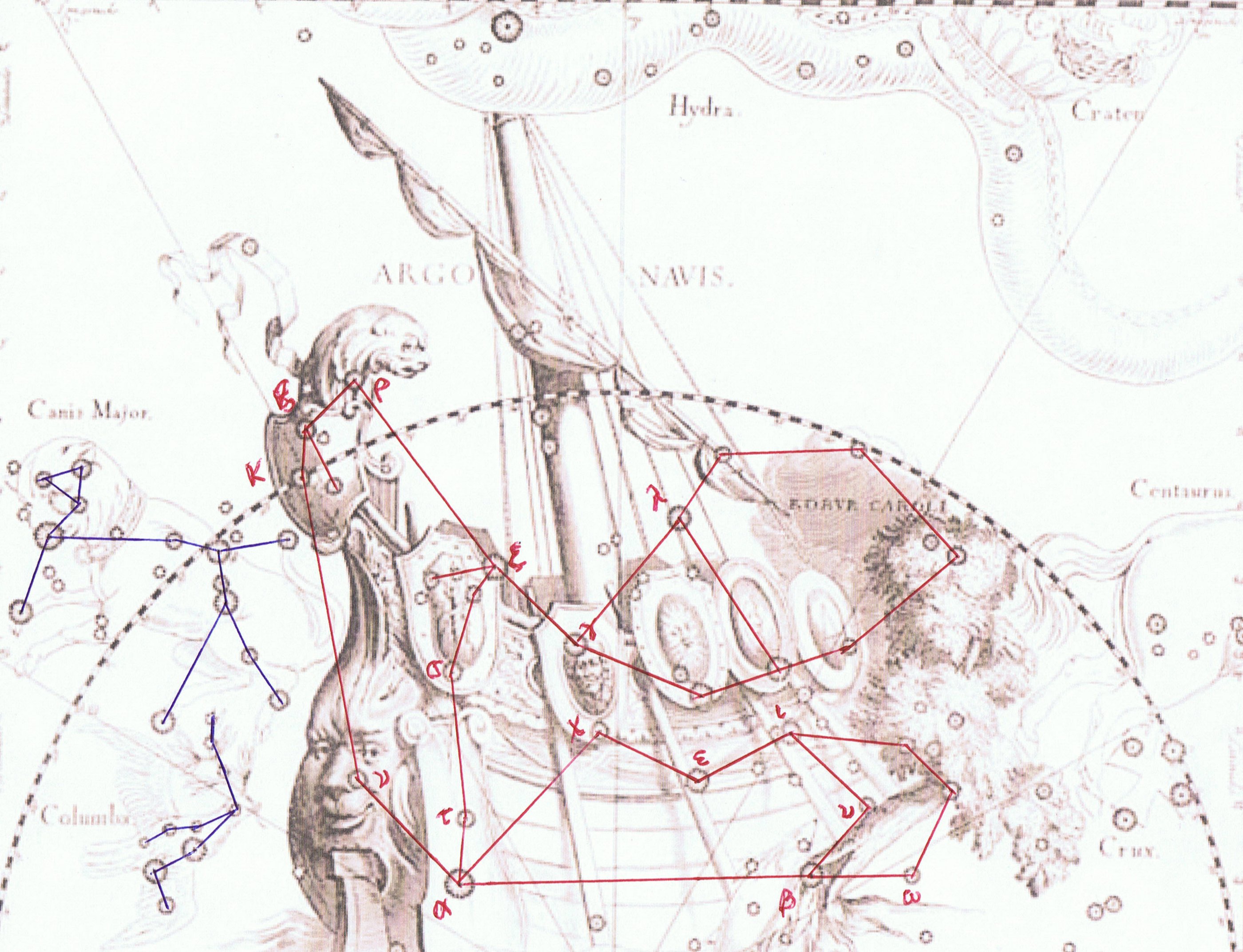|
4. For the moment my interest is drawn to the stars which rise heliacally in the 9th and 10th hours, in the 5th month after equinox. Therefore I should in principle not use much effort on χ Carinae at 07h 56m (= day number 120.9). However, it seems to be at a crucial position well worthy of notice:
On Hawaii this was presumably the night of Kane (Tane), a night of prayer immediately before sand would start returning to the beaches (cfr at The Head of the Lion):
Maybe we should recall, from Manuscript E, the last words of the Sun King to his firstborn child: ... The king went into his house and laid down. The first child of King A Matua, Tuu Maheke, came and went into the house. He came and kissed his father on the cheek. King Hotu A Matua asked, 'Who are you?' The royal child replied, 'It is I, the royal child, Tuu Maheke'. King Hotu A Matua said, 'Ah, I wish you luck, oh King, for your sand, very fine sand, fleas [in the sand]!' The implication seems to be that sand is connected with fleas - i.e. with a multitude of offspring waiting to be reborn. Thus when the beaches are refilled with innumerable specks of sand it is a sign of life returning. When water draws back from the beaches life can be seen, earlier water covered it all. χ Carinae is in Hevelius' picture drawn below and a little to the right of Naos (ζ). Yet χ is rising 1.4 days earlier - at the south pole all the straight rightascension hour lines are assembled into a single point and if projected on a flat surface they will look as if they were curved:
Above χ Carinae is γ and further up to the right is λ (Alsuhail). Naos is in Puppis and χ is in Carina, while γ and λ are in Vela. It is interesting to see that Hevelius has drawn a Sun face on the shield in the quadrangle below the line from γ to λ:
Alphard in Hydra is sitting in the top of the mast:
The 5th Tahitian star pillar shows where to find the mast of Argo Navis. No wonder it was important:
Maybe Hydra has tied herself to the top of the mast? It should be the position for a ruler, at the top and in the center. |
||||||||||||||||||||||||||||||||||||||||||||||||||||||||||||||||||||||||||








